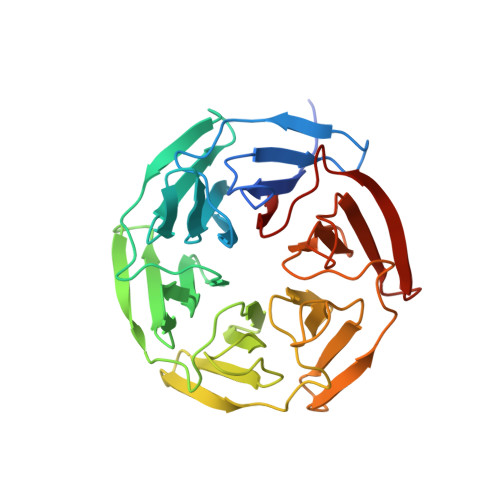Small molecules inhibit the interaction of Nrf2 and the Keap1 Kelch domain through a non-covalent mechanism.
Marcotte, D., Zeng, W., Hus, J.C., McKenzie, A., Hession, C., Jin, P., Bergeron, C., Lugovskoy, A., Enyedy, I., Cuervo, H., Wang, D., Atmanene, C., Roecklin, D., Vecchi, M., Vivat, V., Kraemer, J., Winkler, D., Hong, V., Chao, J., Lukashev, M., Silvian, L.(2013) Bioorg Med Chem 21: 4011-4019
- PubMed: 23647822
- DOI: https://doi.org/10.1016/j.bmc.2013.04.019
- Primary Citation of Related Structures:
4IN4, 4IQK - PubMed Abstract:
Keap1 binds to the Nrf2 transcription factor to promote its degradation, resulting in the loss of gene products that protect against oxidative stress. While cell-active small molecules have been identified that modify cysteines in Keap1 and effect the Nrf2 dependent pathway, few act through a non-covalent mechanism. We have identified and characterized several small molecule compounds that specifically bind to the Keap1 Kelch-DC domain as measured by NMR, native mass spectrometry and X-ray crystallography. One compound upregulates Nrf2 response genes measured by a luciferase cell reporter assay. The non-covalent inhibition strategy presents a reasonable course of action to avoid toxic side-effects due to non-specific cysteine modification.
- Biogen Idec, Drug Discovery, 12 Cambridge Center, Cambridge, MA 02142, USA.
Organizational Affiliation:


















